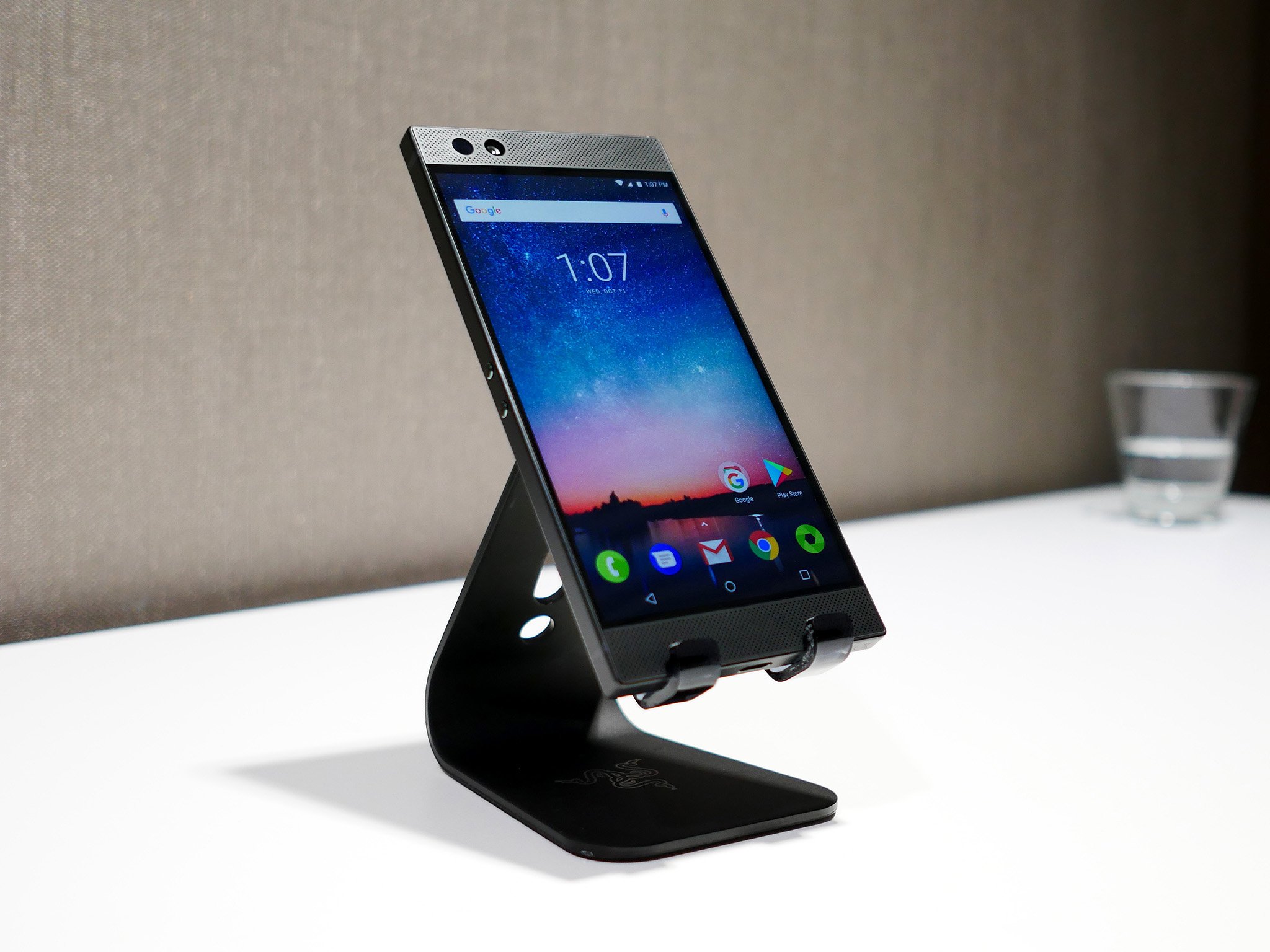5 things you need to know about the Razer Phone
Five quick hits on Razer's first ever phone for gamers.

Razer is a brand loved the world over by PC and console gamers and now it can call itself a phone manufacturer. After the January 2017 acquisition of Nextbit it was only a matter of time, and now after much teasing the covers have been pulled off the Razer Phone.
It's quite the thing, too. Top-end hardware, a minimalist software experience (Android, natch) and a partnership with Microsoft in the U.S. to distribute the phone through its retail channels.
So, you're interested, and we don't blame you at all. Here are five quick hits on what you need to know about the Razer Phone.
1. It's not a gaming phone; it's a phone for gamers

The Razer Phone is a phone for gamers, not a gaming phone. You might consider this one and the same, but there's an important distinction to make.
Razer has made other products before that are "for gamers" without being gaming products, namely the Nabu wearables. The company's philosophy with the Razer Phone was to make a great device that will excite their core fanbase: Gamers.
In this case that means packing the Razer Phone with top of the line hardware like a Snapdragon 835 processor and 8GB of RAM, as well as technology not often seen in a smartphone like a 120Hz display with variable refresh rate and UltraMotion sync. Razer has brought gaming technology to its smartphone, this isn't some half-hearted "gaming phone" somebody stuffed into a controller.
Were it a gaming phone, it would likely be awful. Remember the Nokia N-Gage?
All the latest news, reviews, and guides for Windows and Xbox diehards.
2. UltraMotion sync is a game changer

If you're a PC gamer you'll be familiar with Freesync and G-Sync. UltraMotion is like that, but developed by Razer and applied to a phone since the GPU isn't from AMD or NVIDIA at this size.
But what is it? The display on the Razer Phone has a native 120Hz refresh rate, but also supports a variable refresh rate (VRR). Just like the desktop sync technologies, UltraMotion syncs the GPU and the refresh rate of the display, with the phone's GPU telling the display which frames to draw.
The end result is high frame rate, tear-free, and silky smooth gameplay. But on a smartphone.
3. No headphone jack and a killer DAC

If you like music and you want a Razer Phone then get ready for that dongle lifestyle. In all seriousness, the elimination of the headphone jack wasn't taken lightly, but it was a necessary evil given the rest of the hardware inside the phone.
The good news is that Razer includes a USB-C to 3.5mm adapter in the box. Oh, and it has a 24-bit THX certified DAC inside it. Oh yes.
The speakers on the front are good. Really good for a phone. But the audio through the adapter and a good set of headphones is pretty special. Slap on some lossless audio and lose yourself in the music.
4. It will get Android Oreo

Perhaps less of a contentious issue for some than it might be among the Android enthusiast crowd, but the Razer Phone launches on Android 7.1 Nougat. Otherwise known as old-hat.
OK, it isn't really, but there will be those vocal about a company launching a phone in November 2017 on the previous version of Android. The Razer Phone has been in development for less than a year, and even though it's mostly plain old Android (you actually get Nova Launcher Prime on the Razer Phone, too), it's not as simple as just putting an update on it.
There's first-party stuff underneath, namely UltraMotion, that requires work. Razer will be updating to Android 8.0 Oreo and it's shooting for the early part of 2018. But for now you'll be waiting.
5. Green for launch
Razer's logo on the back is the only visible branding anywhere on what's otherwise a sleek, sophisticated looking smartphone. On most of the models sold the logo will be silver.
But if you're quick, for pre-orders only, you can get one with Razer's trademark green logo. So be quick! You'll be getting the Razer Phone on November 14 and it'll cost you $699.
There's a lot more to learn about the Razer Phone, but it leaves a really solid first impression. We're liking it a lot, but be sure to give us your own first impressions in the comments below.

Richard Devine is a Managing Editor at Windows Central with over a decade of experience. A former Project Manager and long-term tech addict, he joined Mobile Nations in 2011 and has been found on Android Central and iMore as well as Windows Central. Currently, you'll find him steering the site's coverage of all manner of PC hardware and reviews. Find him on Mastodon at mstdn.social/@richdevine
